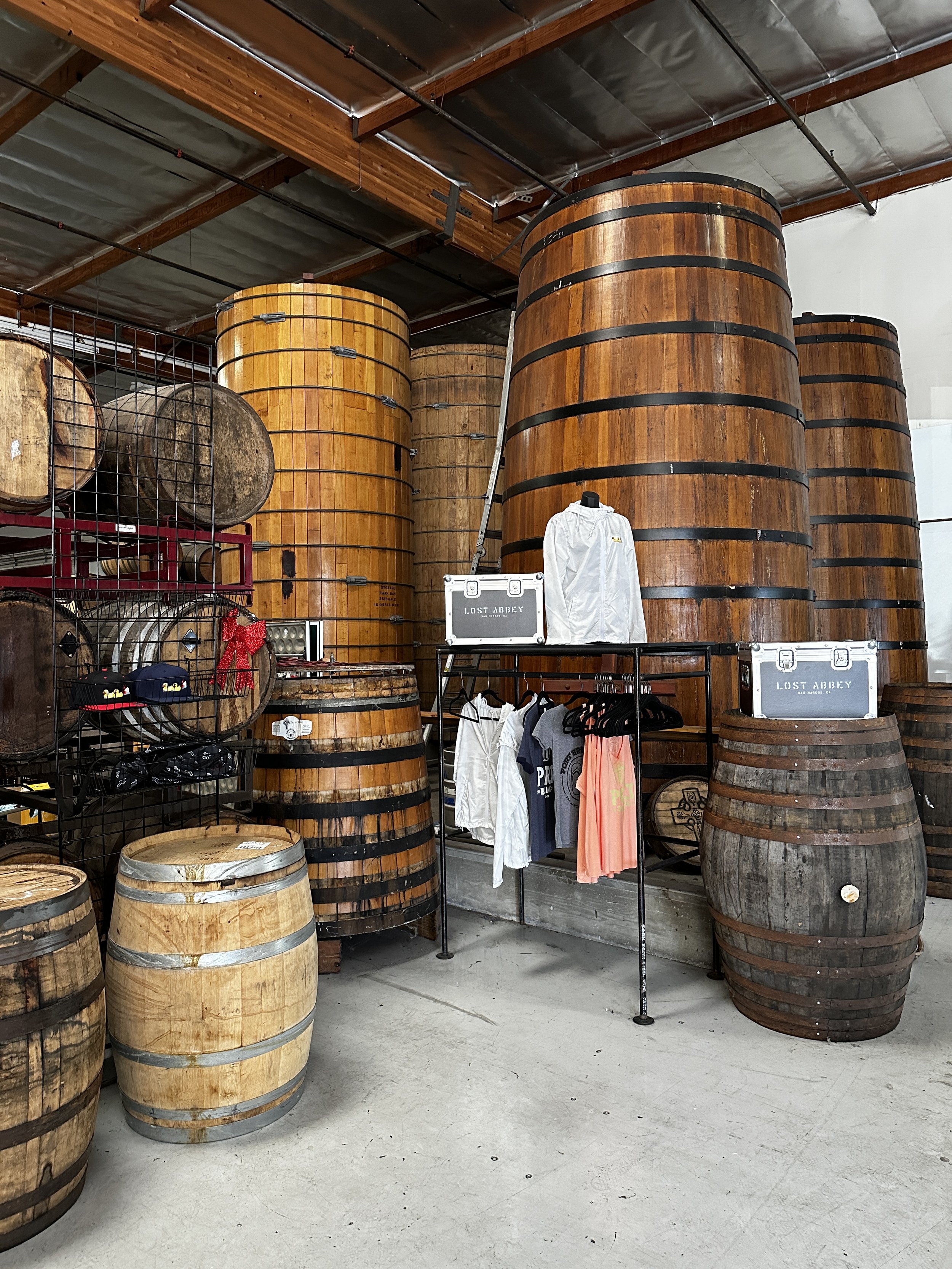Beer Travel: Visiting The Lost Abbey – A Pilgrimage
Growing up as a craft beer drinker then turning into an enthusiast and then into a writer, The Lost Abbey has been one of the breweries I have followed since the early 2000s, but I had never been able to visit the brewery in San Marcos, CA until just before the pandemic. Based on the experience I had then, and a visit in Spring 2023 following the announcement that Lost Abbey would.
My History with The Lost Abbey
The Lost Abbey was one of the first breweries that made news on BeerNews.org, which became BeerPulse.com. The website would post daily news of breweries from around the US, and whenever the news centered on Lost Abbey, I would pay attention. From the release of Angels’ Share barrel-aged barleywine to Red Poppy Sour and beyond, it seemed like The Lost Abbey knew what I wanted to drink, and since I was on a trek through Belgian styles of beer, so, too was The Lost Abbey.
When I joined a beer-tasting group around 2009, the group would have Lost Abbey beers shipped in from California through a trustee, and I would be able to try the latest and greatest beers from this brewery who was firing on all cylinders. Every barleywine was rife with malt flavor and each sour had the flavor of some of the classic Belgian producers of the styles. Unfortunately, I was beginning my career during that time, and I did not have the means to travel to northern San Diego to visit this staple of my beer education.
Fast-forward to 2020 and I was going to San Diego for a conference, so I was going to finally make it to The Lost Abbey.
The Facility on Mata Way
After traversing the highways of San Diego, I veered off in San Marcos, searching for a sign that The Lost Abbey was nearby. I sought a sign for the brewery and found grain silos with the brewery’s logo on them like a beery church in the midst of an otherwise industrial desert. The brewery is housed in an industrial park with several other neighbors, so the silos were the most visible sign that I was in the right place.
It felt surreal to have their saison, Devotion, on tap. The tasting room stood somewhat cavernous, but it was humming and visible from the tables were the stainless tanks that every brewery has. In the forefront of the tanks stood the foeders – wooden vessels for aging beer. In my later visit, the Lost Abbey sign that previously hung in Denver’s Falling Rock Tap Room also stood in the brewery’s tasting room – a testament to the damage COVID had done to the beer industry and winds of change that are currently blowing through The Lost Abbey.
In my initial visit, I made small talk with the bartender, and she told me of the cellar sale they were having at the brewery. All bottles on display were for sale. As a devotee of the brewery’s history, I couldn’t resist a bottle of Rum-Barrel-Aged Angel’s Share. This was the beer that brought the attention of many beer lovers to The Lost Abbey, including myself, and I could not resist. (Oddly enough, I returned in 2023, and they were also having a cellar sale, where I picked up a bottle of Infinite Silence, another barrel-aged barleywine. I am sensing a pattern.) I asked if there was anything else I should know. In 2020, I was told that the most recent vintage of Duck Duck Gooze was on tap, and it likely would not be bottled, so if I wanted it, drink it now. (Based on this experience, I work a question into the conversation when I travel about “Is there anything I have to try while I’m here”?) In 2023, I did not have the same luck, but I asked the question nonetheless.
Visiting The Lost Abbey Changed Me
In the early days of my beer experiences, drinking The Lost Abbey’s beer changed many of my preconceived notions about craft beer. It was some of the first Belgian-inspired beer I had, and these ales led me to dive deeper into beer from Belgium. Drinking the beer from the source almost always gives me additional information about the beer and changes the way I perceive the brewery, and The Lost Abbey is no exception. Each year I attend the conference in San Diego for my day job, there are several stops that I make sure that I make, and one of the Lost Abbeys is always on that list.
The downside of enjoying beer from California breweries is that it is not always the freshest when it gets to the east coast. I have enjoyed beers from The Lost Abbey closer to home, but they never taste as good as they do in their home state. Visiting the brewery gave me both a baseline flavor and aroma of the beer as well as an experience that I will always attach to their beers to ensure that I keep coming back. It helps that with four companies under the same roof (The Lost Abbey, Port Brewing Company, Pizza Port, and Tiny Bubbles), there is always something new I want to try or something I have a memory attached to that I have to relive.




